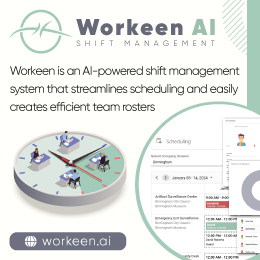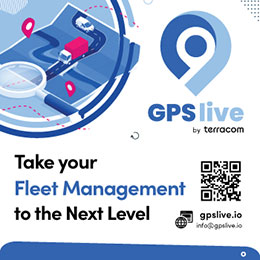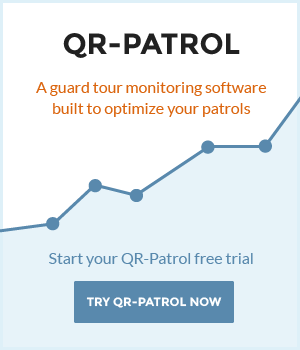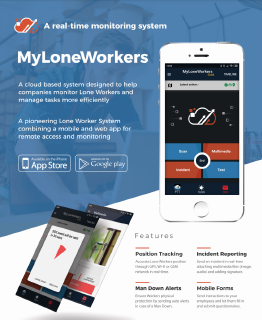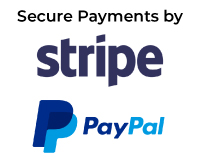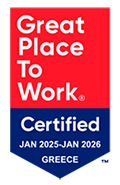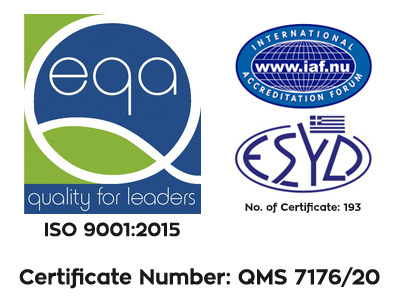
Preventing Workplace Injuries: How Smart Technology Redefines Workplace Health and Safety for Field Teams
Table of Contents
- Understanding Workplace Health and Safety in Modern Field Operations
- What Is MyLoneWorkers and How It Prevents Workplace Injury
- Smart Technology and the Future of Workplace Health and Safety
- Workplace Hazards and How Smart Systems Prevent Them
- Why Workplace Health and Safety Technology Matters for Solo and Field Workers
- Practical Tips to Prevent Workplace Injury Using Smart Tech
- Real-World Impact: Reducing Workplace Injuries with MyLoneWorkers
- The Future of Workplace Health and Safety Is Smart and Connected
- Conclusion: Smart Technology Prevents Workplace Injury Before It Happens
In fast-paced field environments, ensuring workplace health and safety is no longer just about compliance—it’s about leveraging technology to prevent every potential workplace injury before it happens.
From construction and facility maintenance to security and logistics, field teams face daily risks that demand proactive solutions. This is where smart technology, and especially systems like MyLoneWorkers, are transforming how companies protect their people.
Understanding Workplace Health and Safety in Modern Field Operations
The concept of workplace health and safety has evolved far beyond checklists and manual reports. Today, it’s a dynamic, data-driven process focused on real-time visibility, communication, and risk prevention.
Field and lone workers—those who operate away from direct supervision—are especially vulnerable to hazards such as slips, falls, exposure to dangerous materials, or medical emergencies.
Key challenges for field teams include:
 Limited visibility of on-site conditions
Limited visibility of on-site conditions Delayed emergency response times
Delayed emergency response times Communication gaps in remote areas
Communication gaps in remote areas Lack of automation in hazard detection
Lack of automation in hazard detection
Smart workforce management systems like MyLoneWorkers address all these challenges through connected devices, instant alerts, and continuous monitoring.
What Is MyLoneWorkers and How It Prevents Workplace Injury
MyLoneWorkers is a comprehensive cloud-based workforce management system designed for field operations and remote teams. It helps organizations enhance safety, streamline operations, and minimize the risk of workplace injuries.
Through its web and mobile applications (Android & iOS), MyLoneWorkers empowers managers to oversee blue-collar and field workers in real time, ensuring no one is ever truly “alone” on the job.
How It Works
MyLoneWorkers uses NFC, Beacon, Virtual Checkpoints, and QR-code technology to track and report worker activity. Field employees scan tags placed at specific locations, automatically sending updates—complete with GPS and timestamp data—to the cloud-based management platform.
This data provides real-time visibility, enabling instant decision-making when a safety risk or incident occurs.
Workers can also attach photos, voice notes, and signatures to their reports, ensuring every inspection or event is documented. In emergencies, pressing the SOS button immediately alerts the monitoring center with precise location details—accelerating the response time and reducing the chance of severe injury.
Smart Technology and the Future of Workplace Health and Safety
Smart technology plays a pivotal role in redefining workplace health and safety. It not only detects hazards but also predicts and prevents them.
Let’s look at how MyLoneWorkers integrates key innovations to create safer, more responsive environments for field teams.
1. Man Down Alerts: Detecting Accidents Instantly
One of the leading causes of workplace injuries among lone workers is falls or sudden collapses. The Man Down alert feature automatically detects inactivity or unusual movement and sends an instant alarm to the monitoring center—ensuring a rapid response even if the worker cannot call for help.
2. SOS and BLE Panic Buttons: Immediate Help, Anytime
MyLoneWorkers allows workers to send instant SOS alerts via smartphone or an external BLE panic button. If a worker encounters danger or suffers a workplace injury, one quick press ensures management is notified immediately, with accurate GPS location.
3. Welfare Check: Ensuring Continuous Worker Wellbeing
Regular Welfare Checks are automated safety intervals that verify a worker’s condition. If a check is missed, an alert is sent to supervisors. This proactive system ensures that no worker is ever left unmonitored for long periods—an essential step in maintaining workplace health and safety.
4. Geofence Alerts: Keeping Workers Within Safe Zones
Geofencing technology alerts managers if a worker leaves a designated safe area. It’s particularly valuable for high-risk environments or restricted zones, preventing workplace hazards before they turn into incidents.
5. AI Assistant: Data-Driven Safety Management
The built-in AI Assistant allows managers to instantly retrieve critical safety information using natural language queries such as “Show all incidents this week.”
This helps organizations analyze patterns, identify frequent hazards, and take proactive measures to prevent workplace injuries—all without sifting through complicated reports.
Workplace Hazards and How Smart Systems Prevent Them
Workplace hazards are any conditions or behaviors that can lead to injury, illness, or damage. Smart safety management solutions help identify and mitigate them effectively.
Common workplace hazards for field teams include:
 Slips, trips, and falls
Slips, trips, and falls Electrical or mechanical malfunctions
Electrical or mechanical malfunctions Fatigue and overexertion
Fatigue and overexertion Exposure to weather or hazardous substances
Exposure to weather or hazardous substances Working in isolation without supervision
Working in isolation without supervision
Smart systems like MyLoneWorkers prevent these risks through:
 Real-time location tracking to identify high-risk zones
Real-time location tracking to identify high-risk zones Automated alerts when a worker is inactive or off-route
Automated alerts when a worker is inactive or off-route Instant communication tools for emergency coordination
Instant communication tools for emergency coordination Predictive insights powered by AI to spot recurring risks
Predictive insights powered by AI to spot recurring risks
This proactive approach ensures companies comply with workplace health and safety regulations while significantly reducing the chance of workplace injury.
Why Workplace Health and Safety Technology Matters for Solo and Field Workers
Solo or remote workers—also called lone workers—are employees who perform their tasks without direct supervision. They may be maintenance staff, guards, utility inspectors, or engineers traveling between sites.
Understanding the field worker definition helps businesses recognize their specific risks: working in isolation, unpredictable environments, and limited access to immediate help.
Smart safety systems like MyLoneWorkers bridge this gap by:
 Creating a digital link between the worker and management
Creating a digital link between the worker and management Enabling real-time welfare monitoring
Enabling real-time welfare monitoring Reducing response times to emergencies
Reducing response times to emergencies Enhancing overall communication and accountability
Enhancing overall communication and accountability
With tools such as SafePass, Trail Workers, and Work Orders, managers can plan, monitor, and verify activities—ensuring every task meets both operational and safety standards.
Practical Tips to Prevent Workplace Injury Using Smart Tech
Integrating smart systems into your safety strategy doesn’t have to be complicated. Here are actionable steps companies can take to reduce the likelihood of workplace injury:
 Digitize Routine Safety Checks: Replace manual logs with mobile scanning and cloud-based data to instantly track compliance.
Digitize Routine Safety Checks: Replace manual logs with mobile scanning and cloud-based data to instantly track compliance. Automate Alerts and Notifications: Configure real-time alerts for inactivity, off-route movements, or missed welfare checks.
Automate Alerts and Notifications: Configure real-time alerts for inactivity, off-route movements, or missed welfare checks. Train Workers on Smart Device Use: Make sure every worker understands how to use SOS buttons, scan checkpoints, and respond to alerts.
Train Workers on Smart Device Use: Make sure every worker understands how to use SOS buttons, scan checkpoints, and respond to alerts. Leverage AI Insights: Use the AI Assistant to analyze patterns in incidents, identify recurring hazards, and predict risks.
Leverage AI Insights: Use the AI Assistant to analyze patterns in incidents, identify recurring hazards, and predict risks. Integrate Geofencing for Safer Routes: Define safe operational zones and receive instant alerts if a worker exits or enters restricted areas.
Integrate Geofencing for Safer Routes: Define safe operational zones and receive instant alerts if a worker exits or enters restricted areas. Encourage Proactive Reporting: Empower employees to log observations, photos, or voice notes—turning near-misses into learning opportunities.
Encourage Proactive Reporting: Empower employees to log observations, photos, or voice notes—turning near-misses into learning opportunities.
Real-World Impact: Reducing Workplace Injuries with MyLoneWorkers
Companies using MyLoneWorkers report measurable improvements in both safety and operational efficiency.
With real-time data, instant communication, and proactive monitoring, organizations can:
 Decrease emergency response times
Decrease emergency response times Reduce overall workplace injury rates
Reduce overall workplace injury rates Improve compliance with workplace health and safety regulations
Improve compliance with workplace health and safety regulations Strengthen employee confidence and morale
Strengthen employee confidence and morale
The platform’s cloud infrastructure also eliminates the need for expensive hardware or installation, making it accessible for companies of all sizes. Setup is quick, configuration is easy, and managers can oversee global operations from one dashboard.
The Future of Workplace Health and Safety Is Smart and Connected
As industries continue to digitalize, workplace health and safety will rely increasingly on automation, AI, and IoT-powered monitoring.
The goal is clear: predict risks, prevent injuries, and protect every worker—no matter where they are.
MyLoneWorkers stands at the forefront of this transformation, helping companies embrace a proactive, data-driven approach to safety. Whether managing a team of technicians, guards, or maintenance crews, you can rely on MyLoneWorkers to safeguard your most valuable asset—your people.
Conclusion: Smart Technology Prevents Workplace Injury Before It Happens
Every workplace injury represents not just a lost day but a preventable event. By combining smart devices, AI-driven insights, and real-time monitoring, companies can turn safety from a reactive process into a predictive science.
MyLoneWorkers is more than a monitoring tool—it’s a complete safety ecosystem built for the modern workforce. From Man Down alerts to Welfare Checks, Geofence alerts, and the AI Assistant, it offers the intelligent protection today’s field teams need.
Investing in smart workplace health and safety technology means creating a safer, more resilient organization—one where every worker, whether solo or on-site, can perform their duties with confidence and peace of mind.
Protect your lone workers today! Book a demo with us today or contact our team to see how MyLoneWorkers transforms lone worker safety and compliance into a seamless, intelligent process.

